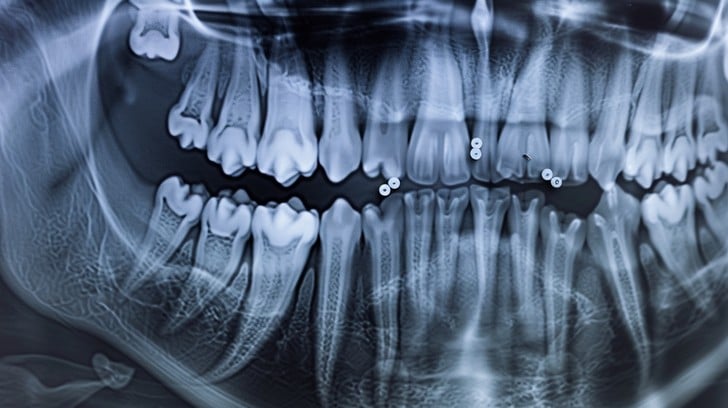Is Panoramic Dental X-ray Safe?
Dental imaging is an essential part of maintaining oral health and diagnosing potential issues early. Among the most commonly recommended imaging methods is a panoramic dental X-ray, which provides a full view of your teeth, jawbone, and surrounding structures. For patients seeking care in Pakistan, a Dental Panoramic X-ray in Islamabad offers a safe and convenient option to get a comprehensive look at oral health. However, many people often ask: is it truly safe?

What Is a Panoramic Dental X-Ray?
A panoramic dental X-ray is a type of imaging that captures the entire mouth in a single image. Unlike standard X-rays that focus on one area, panoramic X-rays provide a broad view of: All upper and lower teeth
Jawbones
Sinus cavities
Temporomandibular joints (TMJ)
This imaging helps dentists detect dental problems early, including impacted teeth, bone abnormalities, cysts, tumors, and fractures.
How Does a Panoramic Dental X-Ray Work?
During the procedure, the patient stands or sits while a rotating arm moves around the head, capturing a complete image. The process is quick, usually taking under a minute, and does not involve any invasive steps. The radiation exposure from a panoramic X-ray is very low compared to other medical imaging procedures. Modern equipment ensures that minimal radiation is used while producing high-quality images.
Is a Panoramic Dental X-Ray Safe for Everyone?
Yes, panoramic X-rays are generally considered safe for most patients. They are non-invasive and use a very small amount of radiation, much lower than a standard CT scan. However, certain precautions are recommended: Pregnant women should inform their dentist to avoid unnecessary exposure.
Children should have X-rays only when necessary, as their tissues are more sensitive to radiation.
Overall, the benefits of early detection of dental issues usually outweigh the minimal risks associated with the radiation.
How Often Should You Get a Panoramic Dental X-Ray?
The frequency of panoramic X-rays depends on your oral health, age, and risk factors: Routine checkups: Some adults may only need an X-ray every 2–3 years.
Orthodontic evaluation: Patients planning braces may require one before treatment.
Dental complications: Suspected impacted teeth, jaw abnormalities, or unexplained pain may prompt more frequent imaging.
Dentists tailor recommendations to individual needs, ensuring safety and efficiency.
Are There Any Risks Associated with Panoramic X-Rays?
Panoramic X-rays are safe, but like all radiation-based procedures, they carry a very small risk of overexposure. Modern dental technology minimizes this risk through: Digital imaging (reduces radiation by up to 80%)
Lead aprons and collars to protect the body
Proper equipment calibration
Compared to older methods, today’s panoramic X-rays provide high-quality images with minimal exposure.
Comparison Table: Panoramic X-Ray vs Traditional Dental X-Ray
Feature
Panoramic X-Ray
Traditional Intraoral X-Ray
Area Covered
Entire mouth, jaw, sinuses
Single tooth or small section
Radiation Exposure
Low
Very low (multiple images may add up)
Duration
30–60 seconds
A few seconds per image
Best For
Impacted teeth, jaw abnormalities, cysts
Cavities, root canals, small localized issues
Comfort
Non-invasive, minimal discomfort
May require holding film in mouth
Frequency
Every 2–3 years or as needed
More frequent for cavity monitoring
This table helps compare panoramic X-rays with traditional methods, highlighting when each is recommended.
Reviews – What Patients Say About Panoramic X-Rays
"I was nervous about X-rays, but the panoramic scan was quick and painless. My dentist could see all my teeth and jaw in one image. I feel confident knowing any issues will be caught early."
"The panoramic X-ray helped my dentist plan my wisdom teeth removal perfectly. The radiation was minimal, and the procedure took less than a minute. Definitely worth it for accurate diagnosis."
"I had a digital panoramic X-ray during my orthodontic evaluation. The images were clear, and I was impressed by how safe and comfortable the process was."
These reviews highlight patient experiences, showing that panoramic X-rays are quick, safe, and highly informative.
FAQs About Panoramic Dental X-Rays
Can a panoramic X-ray detect hidden dental issues?
Yes, it can reveal impacted teeth, jaw cysts, bone abnormalities, and sinus issues that are not visible during a regular dental exam.
Is it safe to get a panoramic X-ray while pregnant?
It is generally recommended to avoid X-rays during pregnancy unless absolutely necessary. Inform your dentist if you are pregnant, and they can take extra precautions or postpone the procedure.
Does a panoramic X-ray hurt?
No. The procedure is non-invasive and painless. Patients simply stand or sit while the machine rotates around their head.
How should I prepare for a panoramic X-ray?
Remove any jewelry, glasses, or metal objects from your head and neck area. You may be given a lead apron for extra protection.
Can children get panoramic X-rays safely?
Yes, but dentists typically recommend them only when necessary. Pediatric patients may require less frequent imaging to minimize radiation exposure.
Conclusion
A Dental Panoramic X-ray in Islamabad is a safe, effective, and non-invasive tool for monitoring and diagnosing oral health conditions. With modern digital technology, radiation exposure is minimal, and the procedure provides a comprehensive view of teeth, jaw, and surrounding structures. By understanding the benefits, risks, and frequency of panoramic X-rays, patients can make informed decisions and maintain optimal oral health. Early detection of dental issues through panoramic imaging often prevents complex procedures in the future.
Contact Us
Address : Office Number LG 20 - 21 Interlace Plaza I-8 Markaz Islamabad
Phone : +92 333 5705871
Email : info@glamorousclinic.com.pk